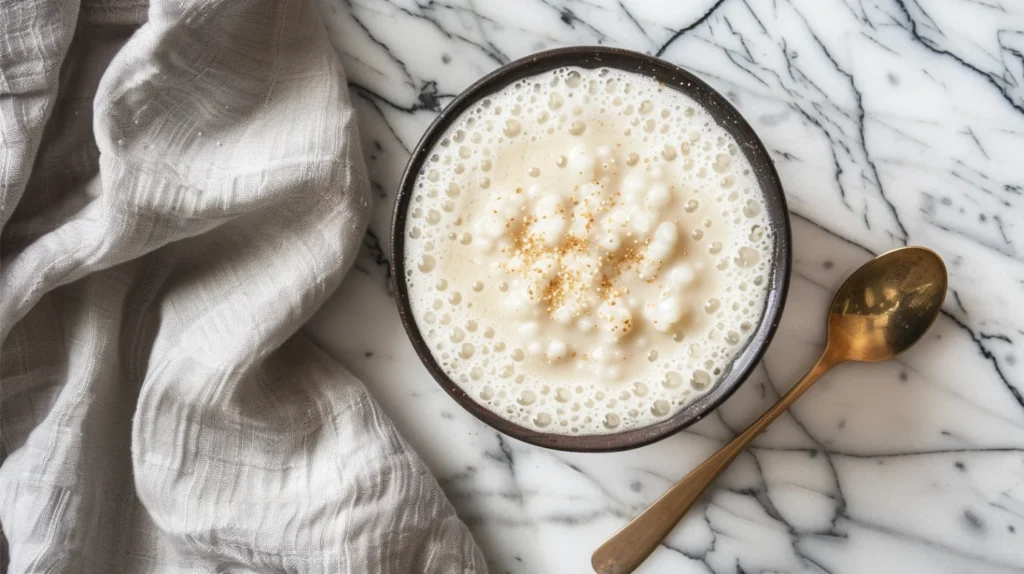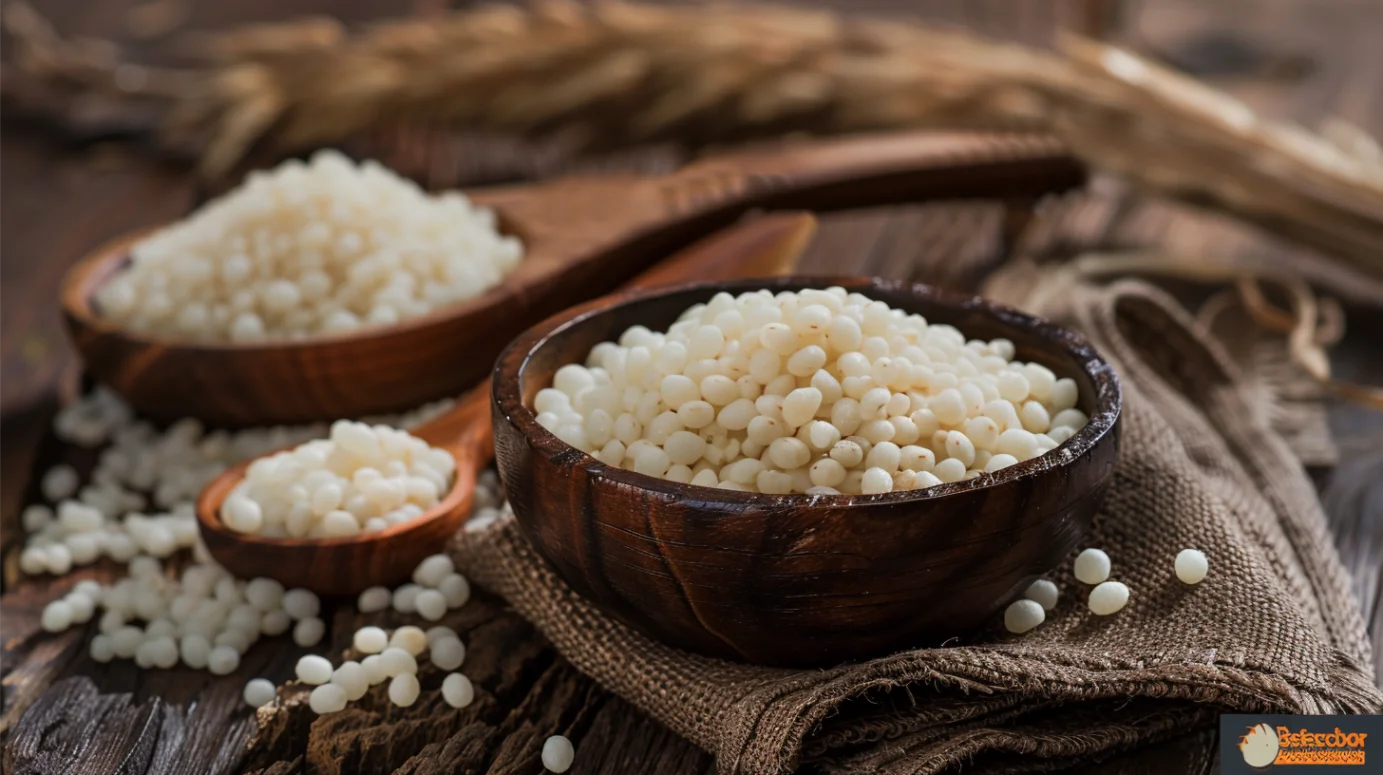The pictures in our articles might not always show exactly what the text is talking about. We use these images to make the article more interesting and eye-catching. They are there to add to the text, but not to replace it or show every detail.
Tapioca, a gluten-free starch extracted from cassava roots 1, has captured the hearts of food enthusiasts worldwide. With its neutral flavor and diverse uses, tapioca is a go-to ingredient for both sweet and savory dishes. In this article, we will uncover facts about tapioca that will expand your culinary knowledge and appreciation for this remarkable ingredient. From its origins and nutritional benefits to its role as a thickening agent and vegan egg substitute, tapioca offers a world of possibilities in the kitchen. So, get ready to embark on a journey through the intriguing world of tapioca and discover how it can enhance your culinary experiences!
Key Takeaways:
- Tapioca is a gluten-free starch: Tapioca is a versatile ingredient used in bubble tea and as a thickening agent, high in carbs, and a source of iron and folate.
- Tapioca in Traditional Dishes: Tapioca is featured in traditional dishes worldwide and can serve as a vegan egg substitute, showcasing its adaptability in various cuisines.
The Origin and Production of Tapioca
Tapioca, derived from the cassava plant native to South America, is a starchy substance extracted from the cassava roots. Once harvested, the roots undergo a meticulous processing method to extract the starch, which is then dried and transformed into the familiar small white pearls or flour that we recognize.
Tapioca’s Gluten-Free and Grain-Free Nature
For individuals with gluten sensitivities or those following a grain-free diet, tapioca serves as an excellent alternative. Being naturally gluten-free and devoid of any grains or gluten-based proteins, tapioca opens up a world of culinary possibilities for those with dietary restrictions.

Tapioca in Bubble Tea and Beyond
Tapioca pearls add a chewy texture to bubble tea, a popular beverage choice. The neutral flavor profile of tapioca makes it a versatile ingredient that can adapt to sweet and savory dishes alike, enhancing the overall culinary experience with its unique texture.
Tapioca as a Thickening Agent
The starch content of tapioca makes it an ideal thickening agent for soups, stews, and sauces. It contributes to achieving a smooth and velvety texture, elevating the overall quality of the dish.
Tapioca’s Nutritional Profile
Tapioca is a low-calorie ingredient free from cholesterol and saturated fats, making it a healthier choice for individuals monitoring their fat intake. Despite the lack of protein or fats, tapioca is rich in carbohydrates, providing a quick energy boost, particularly favored by athletes before workouts.
Tapioca’s Resilience in Drought Conditions
Cassava plants, the source of tapioca, are known for their drought-resistant nature, thriving in dry and arid conditions. This quality makes cassava an invaluable crop in regions with limited rainfall, ensuring a stable food source even in challenging environments.
Tapioca’s Preparation and Cooking Methods
Tapioca pearls are commonly cooked by boiling them, a simple yet effective method to achieve transparency and softness. Whether used in recipes or added to beverages, cooked tapioca pearls bring a delightful texture to various culinary creations.
Tapioca Flour as a Baking Alternative
With its light and fine texture, tapioca flour serves as a suitable substitute for wheat flour in gluten-free baking. Acting as a binding agent, it contributes to creating the desired texture in baked goods, making it a valuable ingredient in gluten-free recipes.
Tapioca’s Nutritional Value
Tapioca contains essential nutrients such as iron and folate, vital for red blood cell production and cell growth and development, respectively. Its easily digestible nature, coupled with its lack of gluten, makes tapioca a gentle option for individuals with sensitive digestive systems.
Tapioca in Traditional Medicine
For centuries, tapioca has been utilized in traditional medicine for its purported medicinal properties. Believed to aid digestion, improve circulation, and promote overall wellness, tapioca holds a special place in cultural practices beyond its culinary uses.
Tapioca as a Vegan Egg Substitute
When mixed with water, tapioca flour forms a gel-like consistency that can serve as a binder in vegan baking recipes, offering an alternative to eggs. This versatile quality further expands the culinary applications of tapioca in vegan and plant-based cooking.
Tapioca’s Culinary Versatility
From desserts and beverages to thickening agents and gluten-free baking, tapioca's versatility shines through in a myriad of culinary creations. Its ability to adapt to various recipes and dietary preferences has solidified its status as a beloved ingredient in kitchens worldwide.
The Allure of Tapioca in Culinary Creations
From bubble tea to puddings and sauces, tapioca adds a unique dimension to dishes, offering a delightful chewy texture and neutral flavor that complements a wide range of ingredients. Whether used in sweet or savory applications, tapioca's appeal in the culinary world continues to grow.
FAQs about Tapioca
What is tapioca?
Tapioca is a starchy substance extracted from the cassava root.
Is tapioca gluten-free?
Yes, tapioca is naturally gluten-free, making it suitable for individuals with gluten intolerance or celiac disease.
How is tapioca made?
Tapioca is produced by extracting starch from cassava roots, which is then processed into flour or pearl-like balls.
What are popular dishes featuring tapioca?
Tapioca pudding, bubble tea, and cassava cake are among the popular dishes showcasing tapioca as a key ingredient.
Is tapioca nutritionally beneficial?
Tapioca is a good source of carbohydrates and essential minerals like calcium and iron, although it lacks significant amounts of vitamins and fiber.
Can tapioca be used as a thickening agent?
Yes, tapioca starch is commonly employed as a thickening agent in soups, sauces, and gravies due to its ability to create a smooth and glossy texture.
Does tapioca offer any potential health benefits?
Some studies suggest that tapioca may support digestion and contribute to improved gut health.
Are there culinary substitutes for tapioca?
Arrowroot powder, potato starch, or cornstarch can serve as alternatives for tapioca starch in recipes when needed.
Embracing the Diversity of Tapioca in Culinary Delights
In conclusion, tapioca emerges as a versatile and intriguing ingredient that adds a unique touch to a wide array of culinary creations. Its gluten-free nature, nutritional benefits, and adaptability in various dishes make it a staple in kitchens worldwide. Whether enjoyed in bubble tea, pudding, or as a thickener in sauces, tapioca continues to captivate food enthusiasts with its delightful texture and neutral flavor. As you explore the world of tapioca, embrace its culinary diversity and unleash your creativity in the kitchen with this remarkable ingredient.






